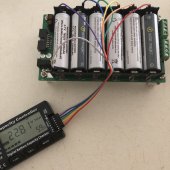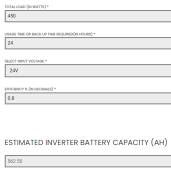Heyo everyone, im new to solar setups although i have tried watching videos and tutorials. Ive been tinkering with a small battery bank with a friend for about a year and progress is kinda slow. Living in australia it can take a while for parts to come in. Skipping most of the background, Im using six of these 18650's to make a very tiny 24v battery bank. I have them place in one of these i find it a bit iffy to understand on where to charge/discarge from (ive been using the +/- Screw collum ports. Finally i have a small 500W 24v inverter 1x USB and 1x mains.
Ive seen some debates about begginers using 18650s, also probably impractical using only 6 of them. I work part time so investing straight into Deep cycles or more renowed 18650's + quantity would take me a fair time plus more parts. Wanting to start small and slowly build up as a hobby, our house has solar but a battery for 13kwh is $12-$14k and got me into making my own solar stuff. Straight up am i wasting my time being such a small battery bank (i have used the inverter to power 2 usb devices for a while before i guess the voltage dropped too low (currently waiting on a Battery Capcitor that i hope will read this right) multimeters read my batterys as max volts (as said im new and after using a battery i thought the volts were meant to drop i have a basic battery voltage reader i used too that stuck to 100% but the volts dropped until i disconnected the load then it began to rise again) But if its still worthwhile to tinker with this and slowly increase the Mah capacity, what kind of charge controller should i get, based on will's videos theres calculations but people also using 'C' like 0.2c or something as a charge rate (roughly 1amp i think) for 18650s. This is the part i get lost on. I have 6 bigger pannels i plan to use on the shed once i get a grasp and go bigger on a battery bank. Also what are the higher quality australian deep cycle batteries, prefferably Lifepo4.
Thank you for any future help/feedback, appologies about the read.
Ive seen some debates about begginers using 18650s, also probably impractical using only 6 of them. I work part time so investing straight into Deep cycles or more renowed 18650's + quantity would take me a fair time plus more parts. Wanting to start small and slowly build up as a hobby, our house has solar but a battery for 13kwh is $12-$14k and got me into making my own solar stuff. Straight up am i wasting my time being such a small battery bank (i have used the inverter to power 2 usb devices for a while before i guess the voltage dropped too low (currently waiting on a Battery Capcitor that i hope will read this right) multimeters read my batterys as max volts (as said im new and after using a battery i thought the volts were meant to drop i have a basic battery voltage reader i used too that stuck to 100% but the volts dropped until i disconnected the load then it began to rise again) But if its still worthwhile to tinker with this and slowly increase the Mah capacity, what kind of charge controller should i get, based on will's videos theres calculations but people also using 'C' like 0.2c or something as a charge rate (roughly 1amp i think) for 18650s. This is the part i get lost on. I have 6 bigger pannels i plan to use on the shed once i get a grasp and go bigger on a battery bank. Also what are the higher quality australian deep cycle batteries, prefferably Lifepo4.
Thank you for any future help/feedback, appologies about the read.






